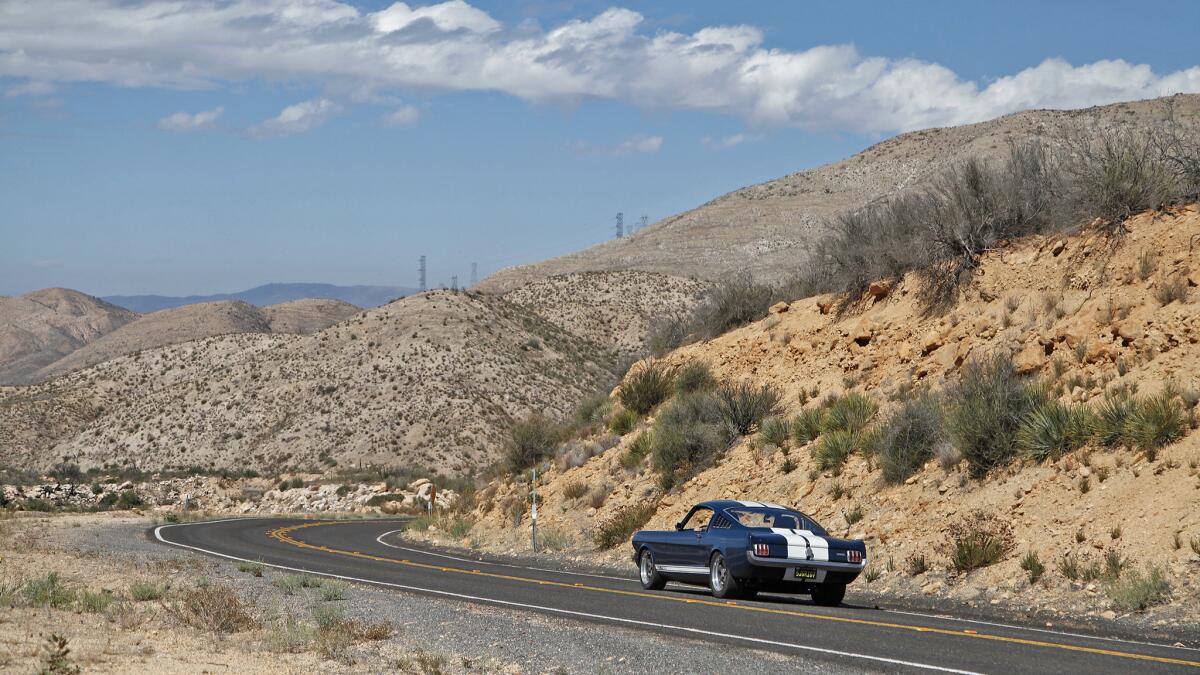Los Angeles County proposal to let landowners use hauled-in water worries environmentalists

- Share via
Los Angeles County is considering a controversial plan to spur housing development in rural unincorporated areas by allowing property owners to haul in drinking water if no other source is available.
If adopted, the initiative would make 42,677 parcels in the northern one-third of the county potentially eligible to construct as many as 3,680 single-family homes over the next two decades, officials said.
For the record:
6:59 a.m. July 14, 2016An earlier version of this article incorrectly referred to the city of Santa Clarita as Santa Clara.
The proposal aims to allow hauling water for construction of new homes despite a 2003 California Department of Public Health determination that hauled water does not provide the equivalent level of health protection and reliability as a permitted public water system or certified private well.
These constituents have a right to develop vacant land they bought as a nest egg.
— Edel Vizcarra, deputy to Supervisor Michael Antonovich
Since then, building permits have not been issued for single-family residences on north county parcels unless the developers can tap groundwater or a public or private water supply.
All of the parcels that would be affected are in county Supervisor Michael Antonovich’s 5th District and include areas northeast of the city of Santa Clarita; Mojave high desert areas north and east of the San Gabriel Mountains in Antelope Valley; and north and south of California State Route 14 and southwest of the city of Palmdale in the communities of Agua Dulce and Acton.
Antonovich, who has announced that he will seek the state Senate’s 25th District seat next year, said the proposal is the result of years of working with the community, local town councils and residents.
Edel Vizcarra, Antonovich’s deputy in charge of land use and planning, said, “This is something north county communities have been asking the supervisor for years. These constituents have a right to develop vacant land they bought as a nest egg.”
So wrongheaded and dangerous it defies belief.
— Dan Silver, executive director of the Endangered Habitats League
Critics point out that the draft environmental impact report for the Single-Family Residential Hauled Water Initiative is based on data gathered in 2010, a year before the start of the ongoing five-year drought, which included the driest four-year stretch recorded in California.
In an interview, Dale Sakamoto, a spokesman for the initiative and a civil engineer with the county Department of Public Works, said, “The plans supporting this initiative are admittedly outdated.”
The Los Angeles County Board of Supervisors is expected to make a final decision in November.
Opponents include Dan Silver, executive director of the nonprofit Endangered Habitats League, who described the proposal as “so wrongheaded and dangerous it defies belief.”
“My big question,” he said, “is this: Why is the county spending time and money to produce thousands of pages of environmental analysis if there’s not enough water to haul to new homes up there in the first place?”
Damon Nagami, a senior attorney at the Natural Resources Defense Council, said he worried the proposal would “open the door to urban sprawl in areas with extreme water scarcity.”
He is also troubled by an environmental impact report’s findings that there would be significant and unavoidable impacts to air quality, biological and cultural resources, land use and planning, public services, recreation and utilities.
“This proposal raises a lot of pressing questions,” he said. “Where would the hauled water be stored? Who would ensure it was safe enough for use in homes? What if a water-hauling company goes out of business?”
According to the environmental impact report, water supplies would depend on the availability of water haulers and retailers. Rates for hauled water would be based on myriad factors including hauling distances and contract fees. Each new development would need to build tanks to store potable water for consumption and fire suppression.
The report predicts ample supplies of hauled water during “average weather years,” but warns that in “single-dry and multiple-dry-year scenarios, there will not be sufficient water.”
Realtors in north county’s rural unincorporated territories support the proposal.
It could help a bunch of moms and pops trying to do the best they can on the outskirts of Antelope Valley.
— Chuck Lynn, a spokesman for the Greater Antelope Valley Assn. of Realtors
“It could help a bunch of moms and pops trying to do the best they can on the outskirts of Antelope Valley,” said Chuck Lynn, a spokesman for the Greater Antelope Valley Assn. of Realtors.
Peggy DeHaas, a realtor in the north county community of Lake Hughes, agreed. “I have listed properties that are remote or rural and would see their values rise under this plan,” she said. “So it’s probably a positive move.”
Twitter: @LouisSahagun
ALSO
Fresno police release body-camera footage of fatal shooting of unarmed 19-year-old
State Sen. Sharon Runner, longtime Republican lawmaker, dies at 62
Why home prices in Southern California keep climbing
UPDATES:
10:27 a.m.: This article has been updated with comment from Supervisor Michael Antonovich.
This article was originally published at 3 a.m.
More to Read
Sign up for Essential California
The most important California stories and recommendations in your inbox every morning.
You may occasionally receive promotional content from the Los Angeles Times.











